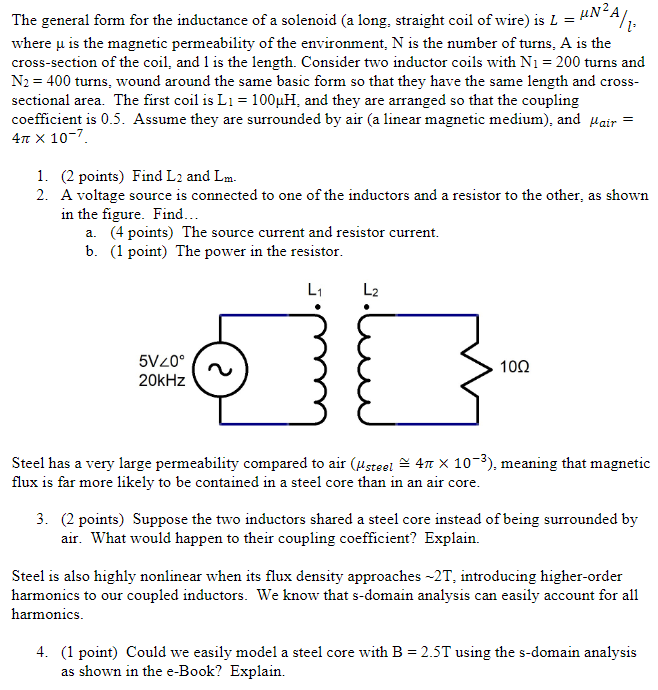(Solved): The general form for the inductance of a solenoid (a long, straight coil of wire) is = N^2A/l ...

The general form for the inductance of a solenoid (a long, straight coil of wire) is ???? = ?N^2A/l, where ? is the magnetic permeability of the environment, N is the number of turns, A is the cross-section of the coil, and l is the length. Consider two inductor coils with N1 = 200 turns and N2 = 400 turns, wound around the same basic form so that they have the same length and cross-sectional area. The first coil is L1 = 100?H, and they are arranged so that the coupling coefficient is 0.5. Assume they are surrounded by air (a linear magnetic medium), and ????air = 4pi * 10^-7.
1. (2 points) Find L2 and Lm.
2. A voltage source is connected to one of the inductors and a resistor to the other, as shown in the figure. Find…
- (4 points) The source current and resistor current.
- (1 point) The power in the resistor.
Steel has a very large permeability compared to air (????steel = 4pi*10^-3), meaning that magnetic flux is far more likely to be contained in a steel core than in an air core.
3. (2 points) Suppose the two inductors shared a steel core instead of being surrounded by air. What would happen to their coupling coefficient? Explain.
Steel is also highly nonlinear when its flux density approaches ~2T, introducing higher-order harmonics to our coupled inductors. We know that s-domain analysis can easily account for all harmonics.
4. (1 point) Could we easily model a steel core with B = 2.5T using the s-domain analysis? Explain.
Expert Answer
1)Inductance of solenoid:? is the magnetic permeability of the environment